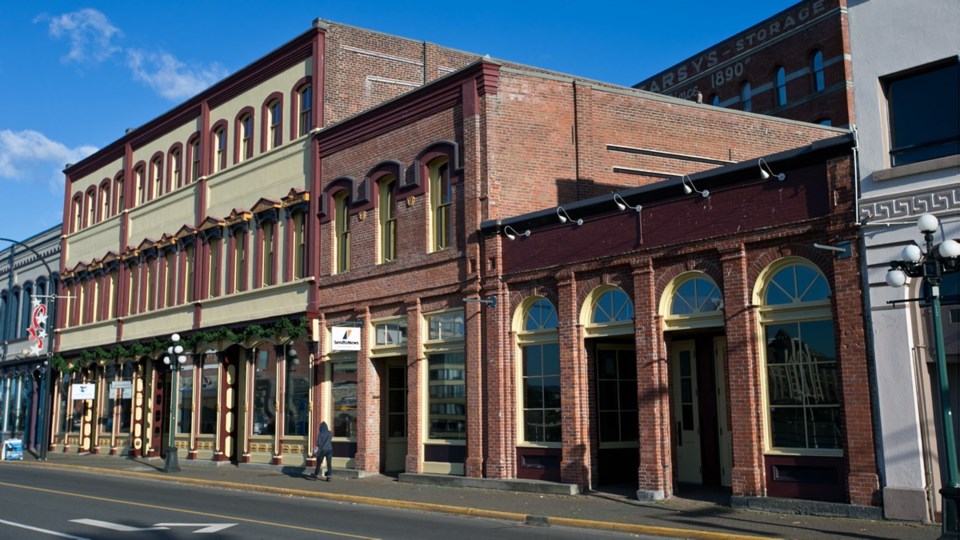A group of restored historic brick buildings facing Victoria Harbour is on the market for $10.8 million.
The three adjoining buildings — all more than a century old — are known collectively as the Rithet Building, running from 1107 to 1119 Wharf St.
The Italianate-style property is one of the highlights for anyone arriving by boat into the harbour.
With its decorative cast-iron columns on the first level and second-storey pedimented window hoods, the Rithet building helps set the stage to show off downtown Victoria’s heritage character and charm.
“The Rithet Building is valued as an integral part of one of the finest early commercial streetscapes in Victoria, which contributes significantly to the history and heritage of the Inner Harbour Precinct,” according to Canada’s Historic Properties website.
A prominent entrepreneur and former Victoria mayor and MLA, Robert P. Rithet, a part-owner of Albion Iron Works, bought the Wharf Street property in 1888.
Many capital region residents know his name from Rithet’s Bog which bears his name in Saanich. Now a park, it was once part of a larger holding, including a farm where Rithet raised thoroughbred horses, including one named Broadmead.
The Wharf Street property is currently owned by Hobo Holdings Ltd. of Victoria, which bought the heritage-designated building about a decade ago.
Close to $3 million has been spent on what company president Richard Holmes calls a “beautiful building.” Its office and retail space is considered Class A by commercial real estate appraisers.
Additional seismic work was completed and “the mechanical system now is second to none,” said Holmes, a member of a long-time Victoria family.
At one time, his grandfather, Cuthbert Holmes, was an owner of the property, Holmes said.
The site was in private hands for the first 100 years.
In the 1970s, the province of B.C. bought the property and spent three years on an extensive restoration.
During that work, the Hudson Bay Company’s original Fort Victoria water well was discovered.
The well was saved and is located in the rear of the lobby of the building.
Local ghostly lore has it that the well is haunted. The story goes that a boy died after going into the well to retrieve an item for a mine during gold-rush days.
Other property features include a stained glass work by the late Canadian artist Kerry Joe Kelly. Interior lights are from the original Birks’ store in Vancouver, Holmes said.
It backs onto historic Helmcken Alley.
The 25,477-square-foot building is fully leased, said Michael Miller, senior vice-president at Colliers International’s Victoria office. Tenants include Latitude Geographics, SendtoNews and SpringTide Whale Watching and Eco-Tours.
The Rithet Building was built in 1861 and had additions up until 1889.
Canada’s Historic Places data base said the building was constructed during Victoria's boom years of the late 19th century. “This building preserves the architectural continuity of the street frontage, which speaks to the importance and grandeur of trade and shipping via the Inner Harbour in the late 19th century.”
The first cast-iron bays on the northern part of the building were made in San Francisco, the website said. Iron columns for the southern bays were later cast by Albion.
Peek at the top of its the building’s exterior cast-iron columns to see a caduceus, a classical symbol of commerce.
“The use of cast-iron columns made in San Francisco on the earliest portion of this building is an important part of its history, reflecting burgeoning trade links with the United States along the west coast of North America,” according to Canada’s Historic Places.
Richard Carr, a showroom wholesaler and commission agent and father of renowned artist Emily Carr, was also an owner, according to historical data from Colliers.



